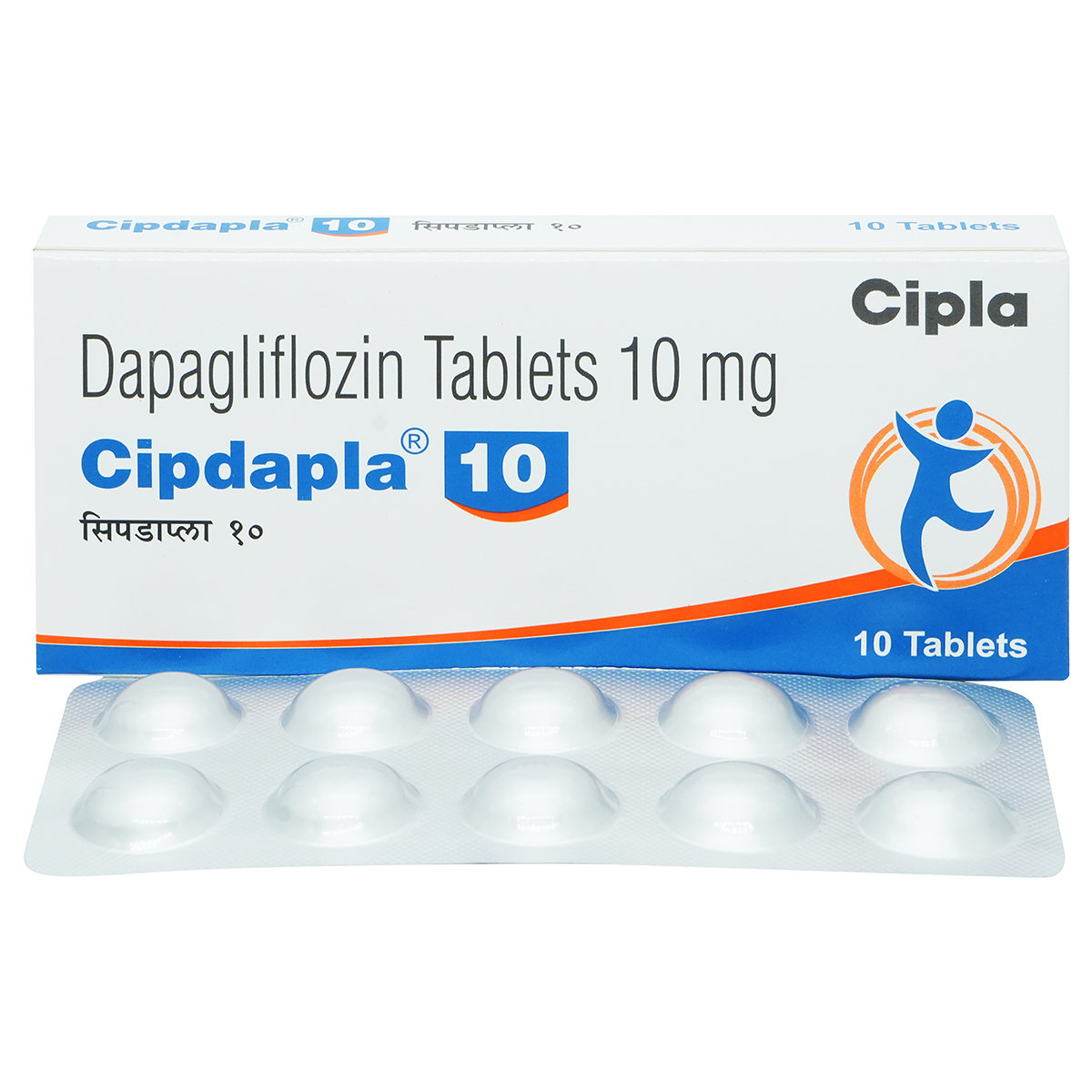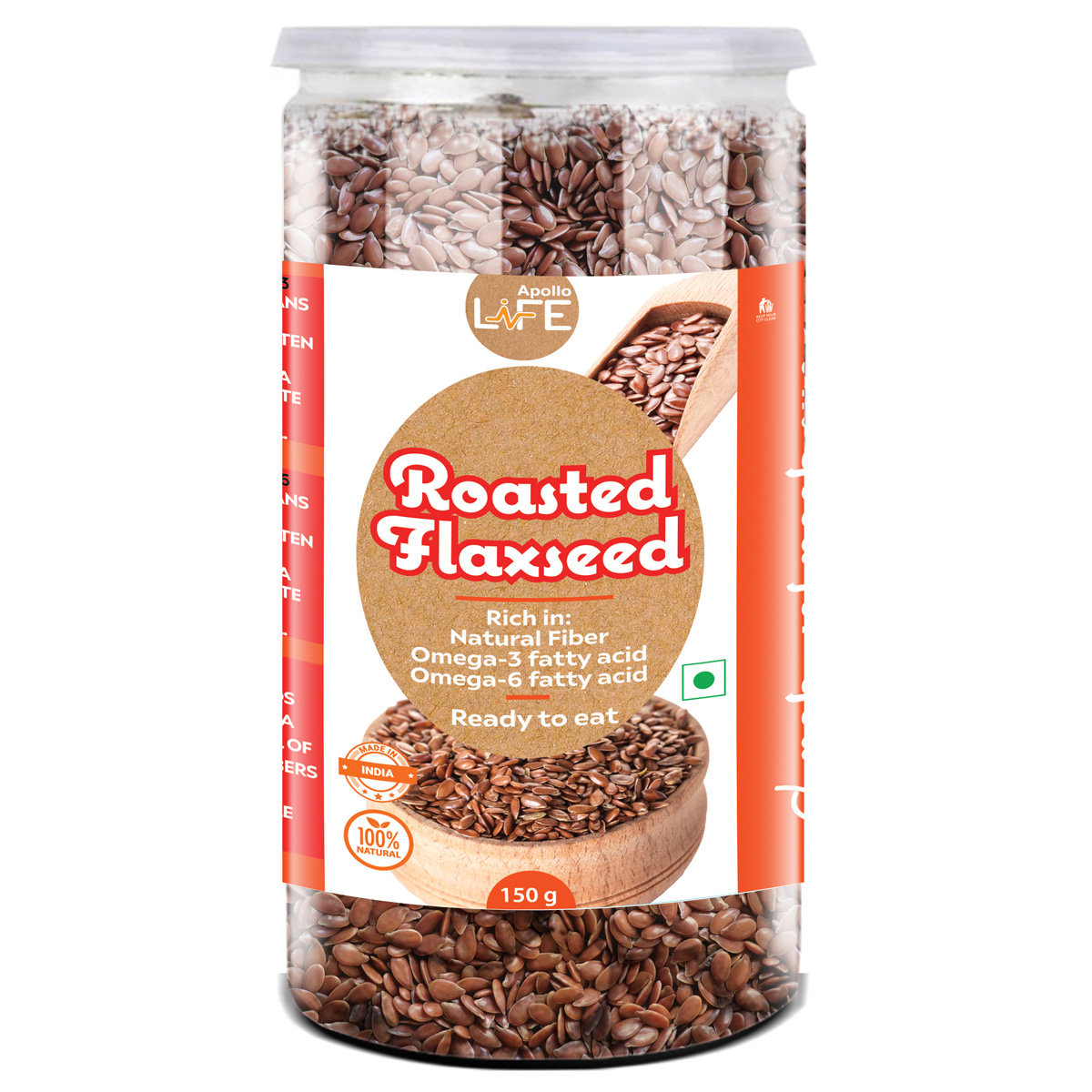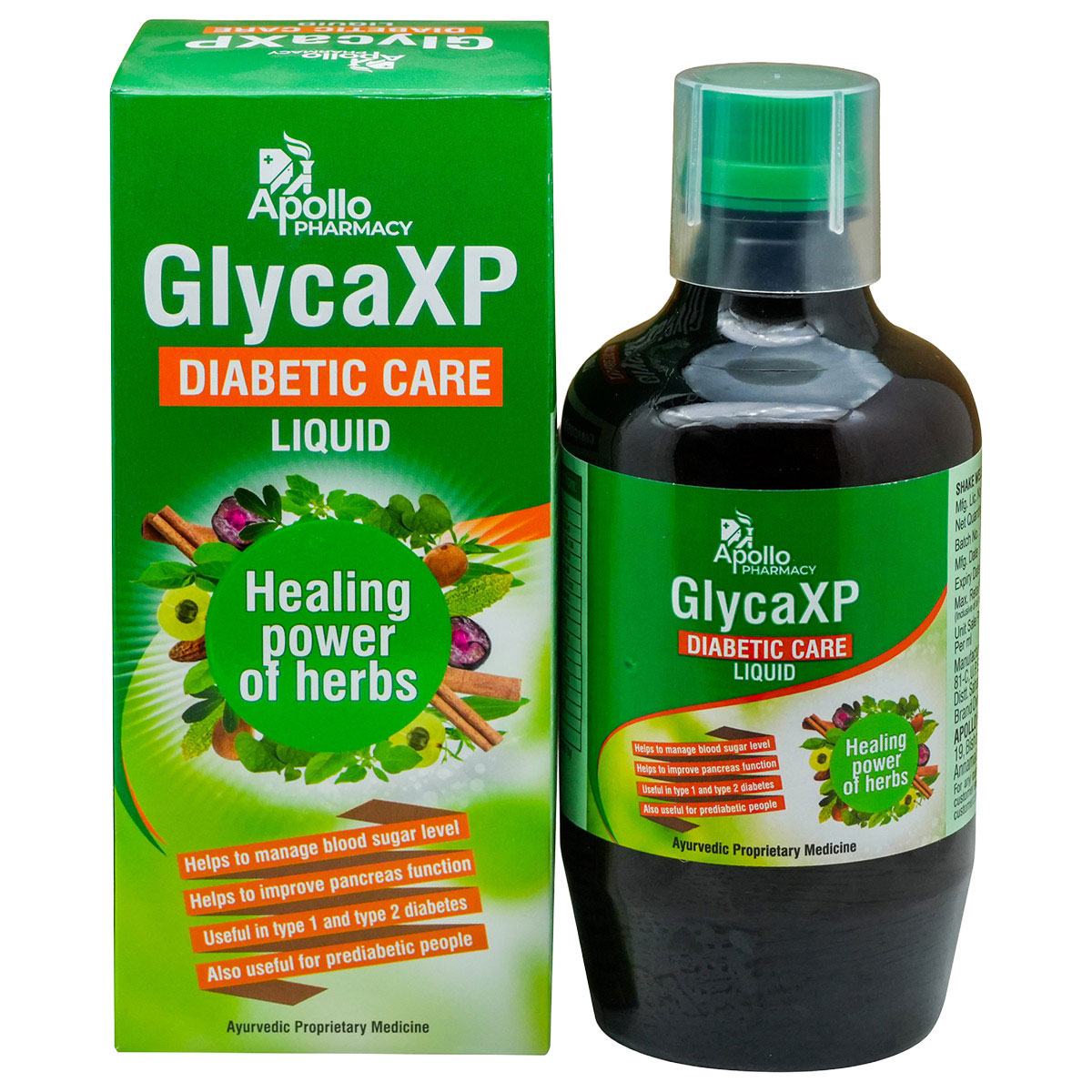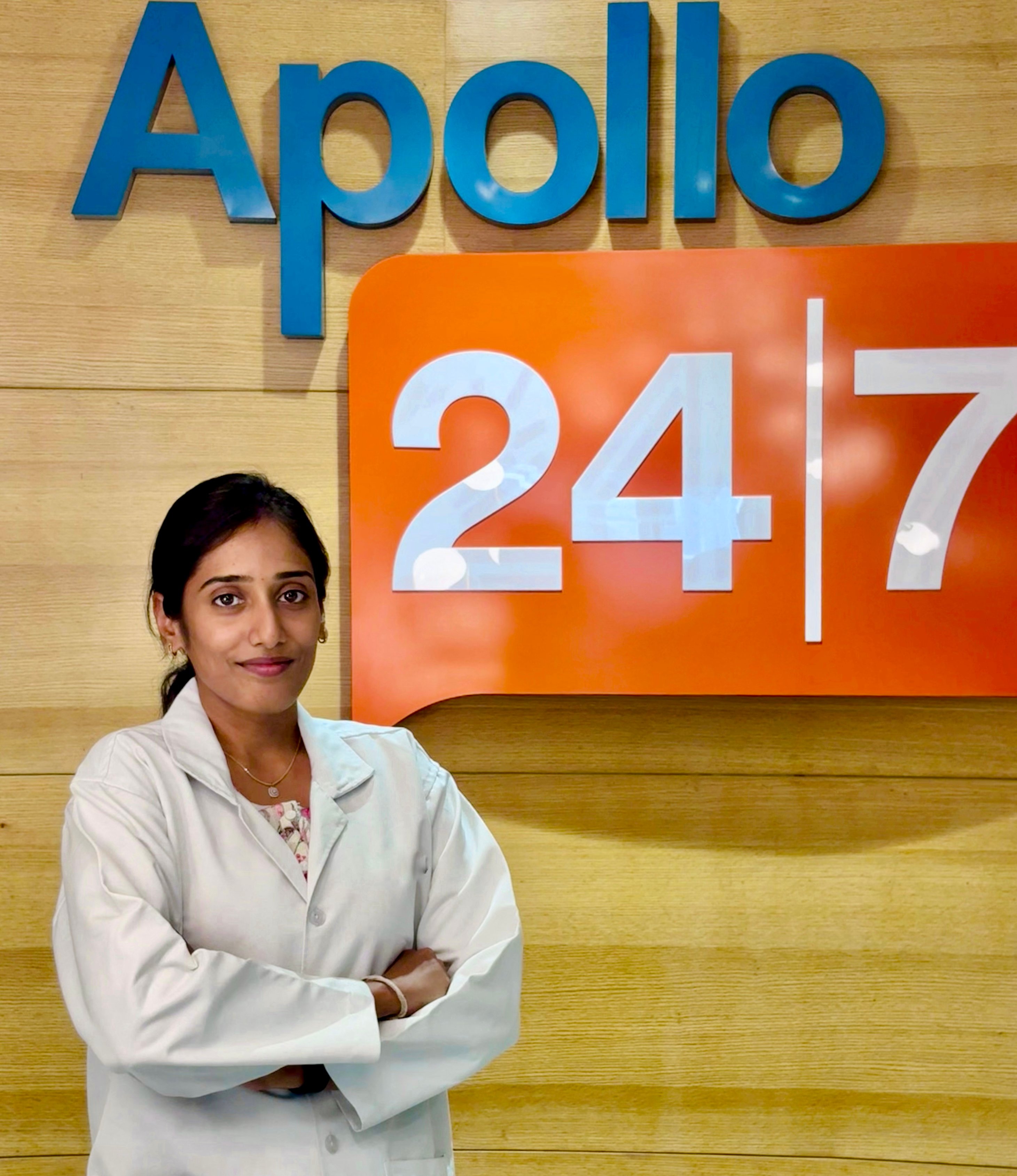Gliflocure 10 Tablet 10's
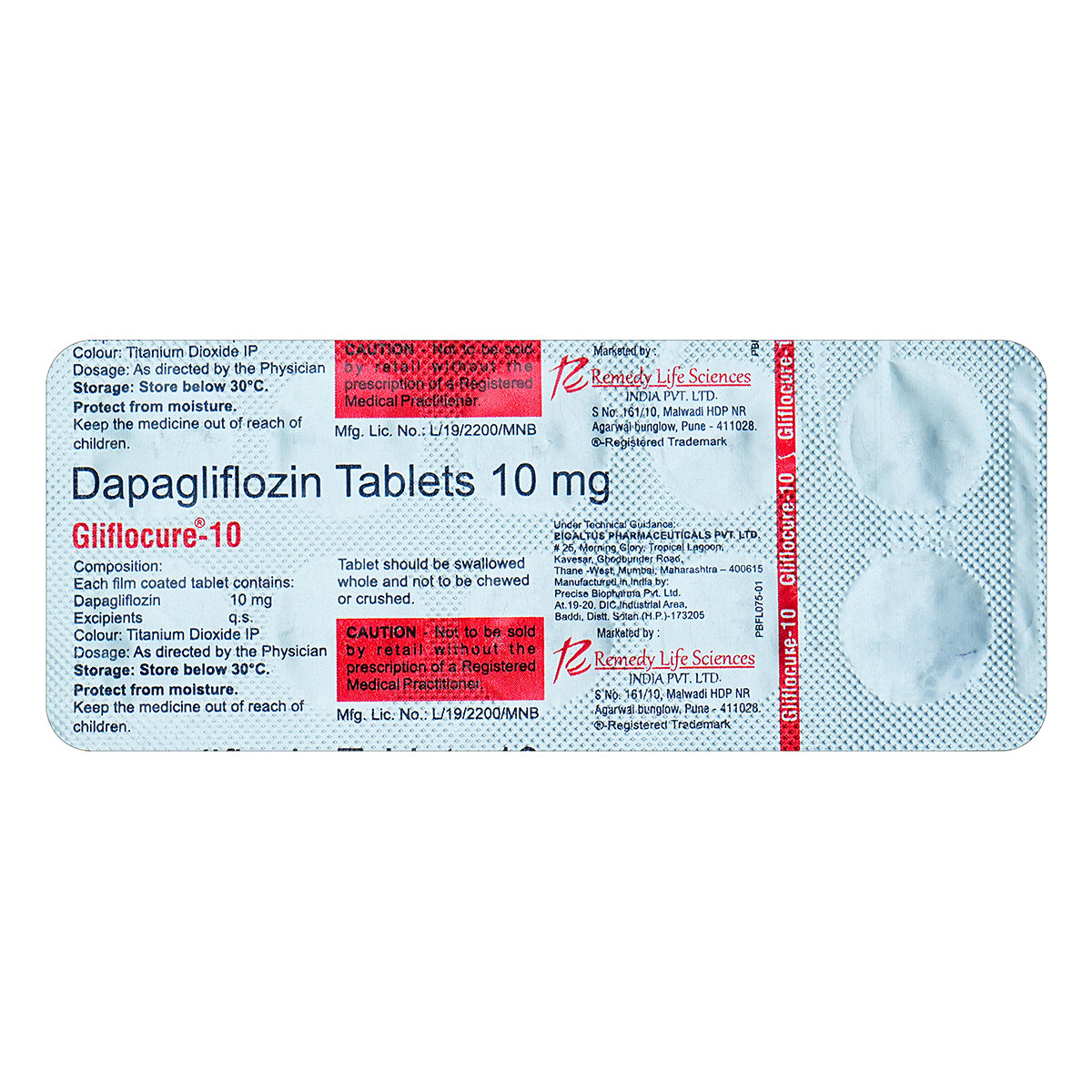
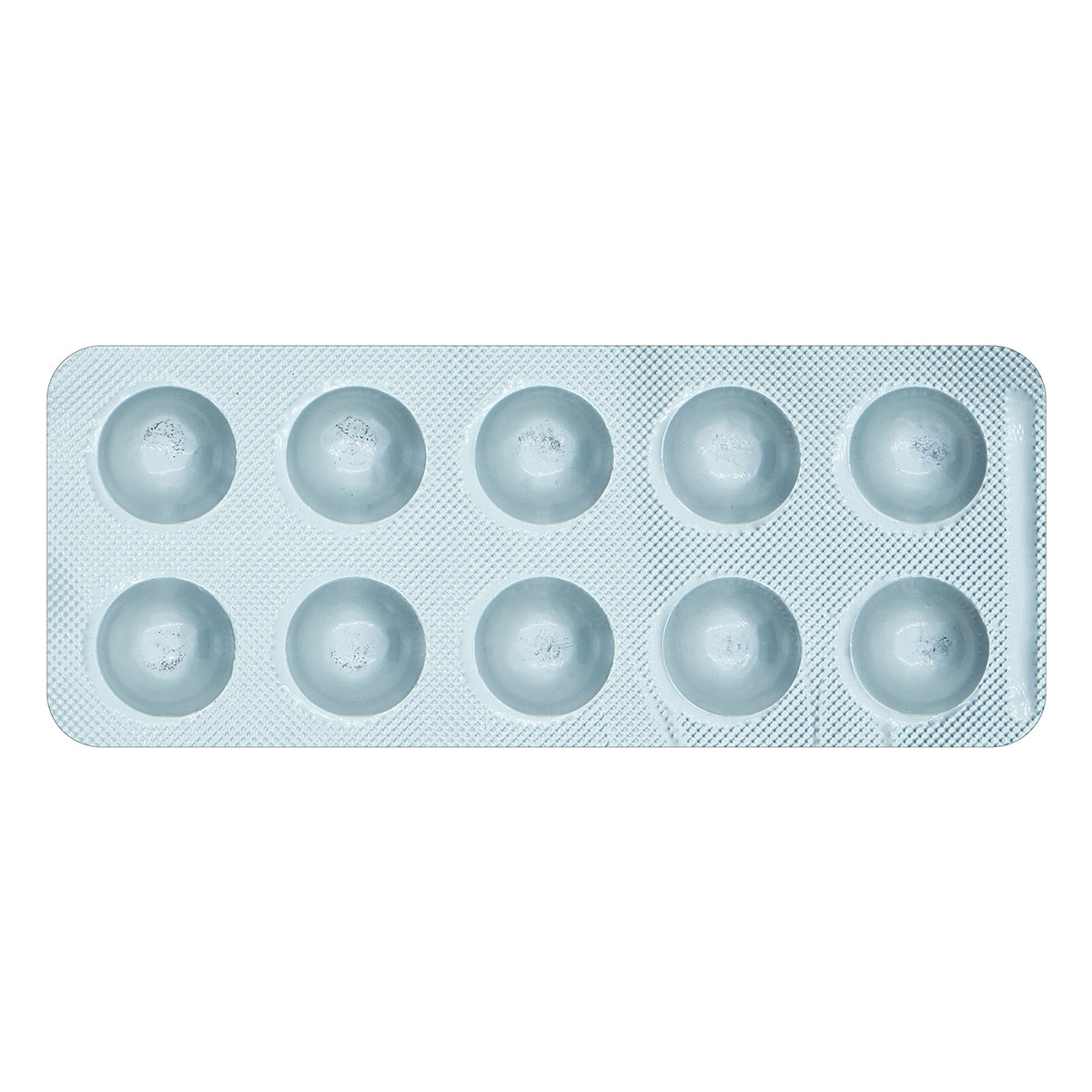
MRP ₹112.5
(Inclusive of all Taxes)
₹16.9 Cashback (15%)
Gliflocure 10 Tablet is used for the management and treatment of type 2 diabetes. It contains Dapagliflozin, which works by increasing glucose excretion through urine. In some cases, you may experience side effects such as a urinary tract infection, increased urination, skin rash, dizziness, and increased thirst. Before taking this medicine, you should tell your doctor if you are allergic to any of its components or if you are pregnant/breastfeeding, and about all the medications you are taking and pre-existing medical conditions.
Know Your Delivery Time
Provide Delivery Location

Secure Payment

India's Most Trusted Pharmacy

Genuine Products
Composition :
Manufacturer/Marketer :
Consume Type :
Return Policy :
Expires on or after :
About Gliflocure 10 Tablet
Gliflocure 10 Tablet belongs to the category of medicines called sodium-glucose cotransporter 2 (SGLT2) inhibitors, primarily used to treat type 2 diabetes along with diet and exercise. Additionally, it is used to treat heart failure and chronic kidney disease in adults.
Gliflocure 10 Tablet contains 'Dapagliflozin', which works by inhibiting the reabsorption of glucose in the body, resulting in increased glucose excretion through urine. It also lowers the amount of effort your heart needs to pump blood, helping it work more efficiently.
In some cases, Gliflocure 10 Tablet may cause side effects such as urinary tract infections, increased urination, rash, dizziness, and increased thirst. Most of these side effects do not require medical attention and gradually resolve over time. However, if the side effects are persistent, reach out to your doctor.
Do not take Gliflocure 10 Tablet if you are allergic to any of its components. Consult the doctor if you are pregnant or breastfeeding. Gliflocure 10 Tablet is not recommended for children. Let your doctor know if you are taking any other medication or have pre-existing medical conditions.
Uses of Gliflocure 10 Tablet
Gliflocure 10 Tablet is used in the treatment of Type 2 diabetes mellitus. The detailed uses of Gliflocure 10 Tablet are as follows:
- Type 2 diabetes: Helps improve blood sugar control along with diet and exercise.
- Heart health in diabetes: Lowers the risk of hospitalisation for heart failure in adults with type 2 diabetes and existing heart disease or multiple risk factors.
- Heart failure: Reduces the risk of hospitalisation in adults with heart failure, where the heart cannot pump blood efficiently.
- Chronic kidney disease: Slows the progression of kidney disease and reduces the risk of kidney failure, heart-related death, and hospitalisation for heart failure in adults with chronic kidney disease.

Have a query?
Directions for Use
- Gliflocure 10 Tablet can be taken with or without food, as advised by the doctor.
- It is usually taken once daily or as prescribed by your doctor.
- Swallow Gliflocure 10 Tablet as a whole with a glass of water.
- Do not crush, chew, or break it.
Medicinal Benefits
- Gliflocure 10 Tablet helps treat type 2 diabetes, along with a balanced diet and regular exercise. It works by removing excess sugar from the body through urine.
- It is also used to treat heart failure in adults when the heart does not pump blood as well as it should. It helps protect your heart from getting worse, reduces symptoms, lowers the chances of needing hospital care, and may help some people live longer.
- This medicine is also used to treat chronic kidney disease in adults with reduced kidney function. It helps protect your kidneys from losing their function, which may help some people live longer.
- Unlike some diabetes medications, dapagliflozin does not cause weight gain.
How Gliflocure 10 Tablet Works
Storage
- If you experience low blood sugar levels, inform your doctor. They will assess the severity and make recommendations for the next actions.
- Your doctor will assess your symptoms, blood sugar levels, and overall health before recommending the best course of action, which may include treatment, lifestyle modifications, or prescription adjustments.
- Follow your doctor's instructions carefully to manage the episode and adjust your treatment plan.
- Make medication adjustments as recommended by your doctor to prevent future episodes.
- Implement diet and lifestyle modifications as your doctor advises to manage low blood sugar levels.
- Monitor your blood sugar levels closely for patterns and changes.
- Track your progress by recording your blood sugar levels, food intake, and physical activity.
- Seek further guidance from your doctor if symptoms persist or worsen so that your treatment plan can be revised.
- Painful urination can be reduced by drinking lots of water.
- Don't hold urine, as it can worsen the pain during urination.
- Try taking probiotics and eating garlic, which can help reduce painful urination.
- Sleep well and give enough rest to your body.
- Take a balanced diet and avoid bladder-irritating foods.
- Quit smoking and intake of alcohol.
- Practice yoga and meditation to improve inner strength and stay healthy.
- Vaginal yeast infections need immediate medical attention.
- Eat healthy foods like whole grains, lean protein and probiotics.
- Keep your blood sugar levels in the medium range, which can help reduce the risk of yeast infections.
- Wash your vulva well to prevent contamination, and after using the toilet, wipe from the front to prevent the spread of infection.
- Avoid tight-fitting clothes as they may increase moisture and heat in the affected area. Ensure to use cotton underwear only.
- Frequently change pads or tampons and always keep the effects dry.
- Avoid sprays, perfumes and deodorants in the vaginal area, as they can change the normal balance of organisms in the vagina.
- Include lifestyle modification by normalising body weight and intake of a balanced diet.
- Follow healthy patterns that are good for heart and reduce the fat level in your body.
- Contact your doctor and follow the prescribed course for a speedy recovery.
- Quit smoking and avoid intake of alcohol which can worsen the situation.
- High levels of phosphate in the blood need immediate medical attention.
- Get a physical examination and blood tests to identify factors causing high phosphate levels to manage the outcomes.
- Avoid consuming phosphate rich foods like egg yolks, soft drinks, milk, chocolate etc.
- Talk to your dietician and consume foods which can maintain ideal phosphorus levels.
- Maintain a healthy weight and implement good habits to prevent stress and anxiety.
What if I have taken an overdose of Gliflocure 10 Tablet
Drug Warnings
- Do not take Gliflocure 10 Tablet if you are allergic to any of its components.
- Inform the doctor if you have severe kidney disease, high ketone levels in blood or urine, heart disease, congestive heart failure, liver disease, diabetic ketoacidosis, type 1 diabetes, or are using insulin or other oral diabetes medications.
- Gliflocure 10 Tablet is not recommended during pregnancy, breastfeeding and in children. Consult the doctor if you are pregnant, think you may be pregnant, are planning for pregnancy or are breastfeeding.
- Do not stop taking Gliflocure 10 Tablet without consulting your doctor, as it may cause an increase in blood sugar.
- Be alert for signs of low blood sugar (hypoglycemia), such as sweating, dizziness, dry mouth, dry skin, fast heartbeat, shivering, intense thirst, or frequent urination. If you experience any of these symptoms, take honey or sugar candies right away.
Drug-Drug Interactions
Drug-Drug Interactions
Login/Sign Up
Co-administration of Gliflocure 10 Tablet with Gatifloxacin may sometimes affect blood glucose levels. Both low blood glucose and, less frequently, high blood glucose have been reported.
How to manage the interaction:
Although there is a possible interaction, Gatifloxacin can be taken with Gliflocure 10 Tablet if prescribed by the doctor. Consult the prescriber if you experience symptoms such as nervousness, confusion, headache, dizziness, drowsiness, tremor, nausea, hunger, weakness, perspiration, palpitation, rapid heartbeat, increased urination, increased thirst, and increased hunger. Maintaining blood glucose levels is advised. Do not discontinue the medication without consulting a doctor.
Co-administration of Gliflocure 10 Tablet with Aliskiren may increase the risk of dehydration and low blood pressure.
How to manage the interaction:
If you are supposed to use Gliflocure 10 Tablet and Aliskiren together, a doctor may adjust the dose and monitor you more frequently. However, if you experience dizziness, fainting, headache, lightheadedness, and/or changes in pulse or heart rate, contact a doctor. Do not discontinue the medication without consulting a doctor.
Drug-Food Interactions
Drug-Food Interactions
Login/Sign Up
Diet & Lifestyle Advise
- Fill your half plate with starchy veggies, a quarter with proteins and a quarter with whole grains.
- Eat at regular intervals. Do not take a long gap between a meal and a snack.
- Monitor your blood sugar level regularly, especially when there are lots of fluctuations.
- Invest at least 150 minutes of moderate-intensity physical activity or one hour and 15 minutes of high-intensity exercise every week.
- Lose weight gradually to achieve a healthy body mass index (18.5 to 24.9).
- Replace refined carbohydrates with whole-grain foods and increase the intake of fruits and veggies and other fibre-enriched foods.
- Reduce intake of saturated fat (or hidden fats) in food like chips, crisps, pastries, biscuits and samosas. Choose omega-3 fatty acid-containing oils for daily cooking. You can use palm oil, mustard oil, groundnut oil, rice bran oil and safflower oil for frying.
- Do not take stress as it may elevate your blood sugar level. You can adopt stress management techniques like mindfulness to control stress-related blood sugar changes.
- Opt for low-fat dairy products (low-fat yoghurt, fat-free milk, and cheese, etc.).
- Keep your blood pressure as normal (120/80) as possible, as it reduces the risk of cardiovascular diseases in diabetes patients.
Habit Forming
Therapeutic Class
All Substitutes & Brand Comparisons
RX
Cipdapla 10 Tablet 10's
Cipla Ltd
₹103
(₹7.21 per unit)
28% CHEAPERRX
Udapa 10 Tablet 10's
USV Pvt Ltd
₹141.5
(₹12.74 per unit)
25% COSTLIERRX
Dapavel 10 Tablet 10's
Intas Pharmaceuticals Ltd
₹146
(₹13.14 per unit)
29% COSTLIER
Alcohol
Caution
You should avoid consuming alcohol with Gliflocure 10 Tablet as it may lead to high or low blood sugar levels.
Pregnancy
Unsafe
Gliflocure 10 Tablet is not recommended for pregnant women. Please consult the doctor if you are pregnant.
Breast Feeding
Unsafe
Gliflocure 10 Tablet is not recommended during breastfeeding. It is safe to seek medical advice before you start Gliflocure 10 Tablet if you are lactating.
Driving
Caution
Drive only if you are physically stable and mentally focused. If you experience drowsiness after taking these medications, you should not drive or operate any machinery or vehicles.
Liver
Caution
Take Gliflocure 10 Tablet only after the doctor's prescription, especially if you are dealing with Liver diseases/conditions, as your doctor may adjust the dose as required.
Kidney
Caution
Take Gliflocure 10 Tablet after the recommendation of a doctor, especially if you have a history of Kidney diseases/conditions. The dosing strength needs to be adjusted by your doctor as required.
Children
Unsafe
The use of Gliflocure 10 Tablet is not recommended for children below 18 years.
Heart
Consult your doctor
Gliflocure 10 Tablet is not contraindicated in heart patients. It is often prescribed to reduce the risk of cardiovascular death and hospitalisation for heart failure in adults with type 2 diabetes and established cardiovascular disease.
Geriatrics
Consult your doctor
While Gliflocure 10 Tablet is safe to be taken by older patients, it is critical to exercise caution and monitor for potential adverse effects, such as dehydration, low blood pressure, and urinary tract infections, which are more common in older adults. Before starting dapagliflozin, it is recommended that you consult with a doctor, particularly if you are 75 or older.
FAQs
Gliflocure 10 Tablet belongs to the category of medicines called anti-diabetics, used for the treatment of type 2 diabetes.
Gliflocure 10 Tablet is a type of medicine known as a sodium-glucose cotransporter-2 (SGLT2) inhibitor used in the treatment of type 2 diabetes. It lowers blood sugar levels by blocking the action of SGLT-2 in the kidney and removes excess sugar from your body through urine.
In case you feel that your blood sugar level is going down and you are feeling weak, immediately eat sugary candies or drink sugary beverages. It will help to balance the blood sugar level in your body. So, it is advisable to keep sugar candies with you.
Gliflocure 10 Tablet can cause weight loss by increasing the amount of sugar that is removed from your body when you pee. Consult your doctor before starting Gliflocure 10 Tablet .
No, a person should continue taking Gliflocure 10 Tablet for as long as a doctor has prescribed for the treatment of type 2 diabetes. You should not stop discontinuing Gliflocure 10 Tablet suddenly, as it may worsen the symptoms of type 2 diabetes and increase the blood sugar level, leading to hyperglycemia.
Type 2 diabetes is a common form of diabetes in which the blood sugar-lowering hormone called insulin, produced by the body, does not function properly. Thus, the blood glucose level increases and symptoms such as frequent urination, increased thirst and increased hunger start. Diabetes, if left untreated or not treated properly, can cause long-term complications such as nerve damage, kidney damage, eye damage, foot problems and poses a high risk of developing heart diseases.
Gliflocure 10 Tablet can cause risk in pregnancy and affect the fetus. Please consult your doctor before starting Gliflocure 10 Tablet .
Your driving ability may be affected if your blood sugar levels are too high or too low. Do not drive or operate machinery if you also experience dizziness or drowsiness.
Yes, using Gliflocure 10 Tablet may cause urinary tract infections in a few people, so always practice good hygiene.
Gliflocure 10 Tablet may cause side effects like urinary tract infection, low blood sugar levels (hypoglycemia), peeing more than normal, skin rash, dizziness, increased thirst, and nausea. Most of these side effects may not require medical attention and gradually resolve over time. However, if the side effects are persistent, reach out to your doctor.
Yes, Gliflocure 10 Tablet is safe to use if prescribed by the doctor.
Gliflocure 10 Tablet should not be taken by people who are allergic to any of its components.
Inform the doctor if you are due to undergo any surgery. The doctor may recommend you to stop taking Gliflocure 10 Tablet before surgery to prevent the risk of diabetic ketoacidosis (a complication of diabetes).
Your doctor may prescribe Gliflocure 10 Tablet along with metformin for better management of blood glucose levels.
Your doctor may prescribe alternate/additional medicine to control blood sugar levels if you have diabetes along with kidney problems. Please consult the doctor before stating Gliflocure 10 Tablet if you have kidney problems.
Gliflocure 10 Tablet should be taken with other medications for diabetes only if prescribed by the doctor. The doctor may lower the dose of other medications to prevent low blood sugar levels.
Take the missed dose as soon as you remember. However, if it is almost time for the scheduled dose, skip the missed dose and take the next dose at the usual time. Do not take a double dose to make up for a forgotten dose.
It is important to check your feet regularly and adhere to foot care advice given by your doctor. If you are undergoing any tests, inform the doctor that you are taking Gliflocure 10 Tablet as it might affect certain urine test results.
Country of origin
Manufacturer/Marketer address
Customers Also Bought
Disclaimer
Author Details
We provide you with authentic, trustworthy and relevant information
Buy best Diabetics products by
Torrent Pharmaceuticals Ltd
Intas Pharmaceuticals Ltd
Eris Life Sciences Ltd
Lupin Ltd
Micro Labs Ltd
Sun Pharmaceutical Industries Ltd
Mankind Pharma Pvt Ltd
Alkem Laboratories Ltd
Lloyd Healthcare Pvt Ltd
Cipla Ltd
Macleods Pharmaceuticals Ltd
Abbott India Ltd
Primus Remedies Pvt Ltd
Glenmark Pharmaceuticals Ltd
Aristo Pharmaceuticals Pvt Ltd
Dr Reddy's Laboratories Ltd
USV Pvt Ltd
La Renon Healthcare Pvt Ltd
Wockhardt Ltd
Emcure Pharmaceuticals Ltd
Fusion Health Care Pvt Ltd
Ajanta Pharma Ltd
Ipca Laboratories Ltd
Alembic Pharmaceuticals Ltd
Corona Remedies Pvt Ltd
East West Pharma India Pvt Ltd
Hbc Life Sciences Pvt Ltd
Eswar Therapeutics Pvt Ltd
Zydus Healthcare Ltd
Alteus Biogenics Pvt Ltd
Elbrit Life Sciences Pvt Ltd
Mitoch Pharma Pvt Ltd
Medley Pharmaceuticals Ltd
Ranmarc Labs
Sinsan Pharmaceuticals Pvt Ltd
Msn Laboratories Pvt Ltd
Nirvana India Pvt Ltd
Tas Med India Pvt Ltd
Akumentis Healthcare Ltd
Arkas Pharma Pvt Ltd
Leeford Healthcare Ltd
Novo Nordisk India Pvt Ltd
Unison Pharmaceuticals Pvt Ltd
Sanofi India Ltd
Acmedix Pharma Llp
Q Check Pharmaceuticals
Blue Cross Laboratories Pvt Ltd
Xemex Life Sciences
Neucure Lifesciences Pvt Ltd
Alvio Pharmaceuticals Pvt Ltd
Anthem Bio Pharma
Spectra Therapeutics Pvt Ltd
Sydmen Life Sciences Pvt Ltd
Aareen Healthcare Pvt Ltd
Diacardus Pharmacy Pvt Ltd
Jubilant Lifesciences Ltd
Systopic Laboratories Pvt Ltd
Talent India Pvt Ltd
Edoc Life Sciences Pvt Ltd
Stature Life Sciences Pvt Ltd
Franco Indian Pharmaceuticals Pvt Ltd
Panacea Biotec Ltd
Sanz Pharmaceuticals
Shrrishti Health Care Products Pvt Ltd
Verse Lifesciences
Akesiss Pharma Pvt Ltd
Hicxica Formulations Pvt Ltd
Indoco Remedies Ltd
Lividus Pharmaceuticals Pvt Ltd
Capital Pharma
Elinor Pharmaceuticals (P) Ltd
Saan Labs
Zydus Cadila
Biocon Ltd
Eli Lilly and Company (India) Pvt Ltd
Lippon Pharma Pvt Ltd
MERAKI HEALTH
Remedy Life Sciences Pvt Ltd
Koye Pharmaceuticals Pvt Ltd
Morepen Laboratories Ltd
Atos Lifesciences Pvt Ltd
Eysys Pharmaceutical Pvt Ltd
MEDICAMEN BIOTECH LTD
Azkka Pharmaceuticals Pvt Ltd
Converge Biotech Pvt Ltd
Erinyle Health Care Pvt Ltd
Elder Pharmaceuticals Ltd
FDC Ltd
Heal (India) Laboratories Pvt Ltd
Knoll Healthcare Pvt Ltd
Jarun Pharmaceuticals Pvt Ltd
Opsis Care Lifesciences Pvt Ltd
Vasu Organics Pvt Ltd
Wallace Pharmaceuticals Pvt Ltd
CADOMAX HEALTHCARE PVT. LTD
Cadomed Pharmaceuticals India Pvt Ltd
Daylon healthcare pvt Ltd
Lincoln Pharmaceuticals Ltd
Medicure Life Sciences Pvt Ltd
Olcare Laboratories Pvt Ltd


